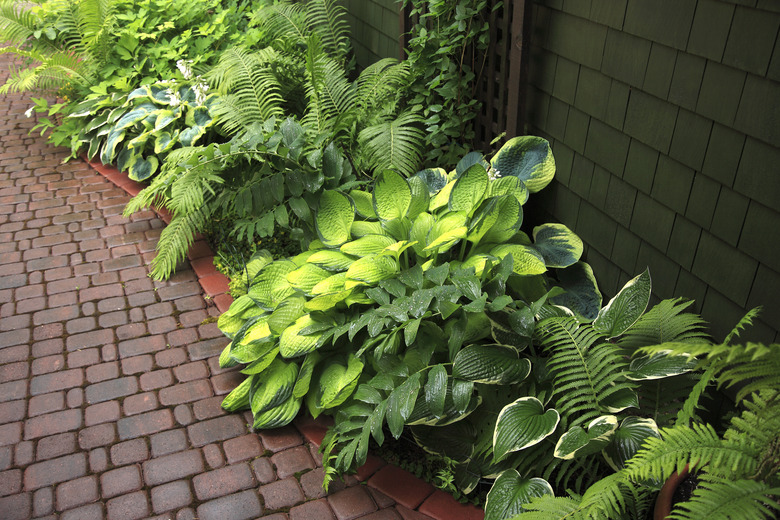Sun Leaves Vs. Shade Leaves
We may receive a commission on purchases made from links.
When comparing sun leaves vs. shade leaves, look closely at a single plant in your garden and note the differences between its leaves. The variations in color, size, and other characteristics don't occur randomly. Your plant's survival depends on its ability to make the most of the sunlight it receives. Through a process known as photosynthesis, the plant converts light into the energy it needs to live. To capture that precious resource, plant leaves adapt and specialize in sun or shade.
Placement and Color
Placement and Color
Leaves exposed at a plant's top and outer edges adapt to process plentiful sun at high rates. Called sun leaves, they require less chlorophyll, the substance that absorbs light for photosynthesis and gives plants their green color. The cells where photosynthesis takes place, called chloroplasts, are smaller as well. As a result, sun leaves are lighter green than leaves at the plant's bottom or interior.
Shaded by sun leaves, the inner leaves adapt to become more efficient at capturing small amounts of sun. In these shade leaves, chloroplasts are larger and contain more of the chlorophyll needed to absorb light. Because of this, shade leaves appear darker green.
Size and Stomata
Size and Stomata
Sun leaves deal with more heat and drying wind in their exposed locations, but rapid photosynthesis and small chloroplasts allow for a smaller leaf, and the smaller surface area protects against drying too. Shade leaves expand in size to collect as much light as possible. Their sheltered locations guard against water loss. Sun and shade leaves also differ in their tiny, porelike openings, usually concentrated on the protected underside of the leaves. Known as stomata, these pores are smaller in sun leaves, but they compensate by being denser. Shade-leaf stomata are larger and much fewer in number.
Thickness and Layers
Thickness and Layers
Differences in surface area between sun and shade leaves also relate to their mass. Sun leaves are small in area, but they are thick, and shade leaves are large and thin. Plant leaves have several different layers, similar to human skin. The outer layer protects, while the inner layers handle photosynthesis and the exchange of gases. The first protected inner layer just beneath the leaf surface is where photosynthesis happens. The next layer supports the process. In sun leaves, the photosynthesis layer is thick, and the cells are packed tight. In shade leaves, larger in size and surface area, the layer is thin, and cells are less dense.
Adaptability and Acclimation
Adaptability and Acclimation
When leaves have adapted and become either sun or shade leaves, they work most efficiently at that light level. Sun leaves aren't prepared to capture low light any more than shade leaves are ready for full sun. Moved to a new location with higher or lower light, the leaves can't process light as they normally would. Fortunately, sun leaves can become shade leaves and vice versa, and this is why gradual change is so important when you move plants between the indoors and outdoors. Acclimate your plant a little at a time so its sun and shade leaves can adjust.
